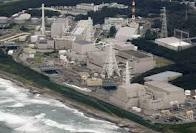
Reactor of Japan's Hamaoka plant may be decommissioned
Chubu Electric Power may decommission a reactor of Hamaoka nuclear plant due to seawater infiltration of a reactor core.
More than a year after the plant was shut for safety reasons following the Fukushima disaster, water contaminated with low-level radiation is seeping internally in the No.5 unit's turbine building, suggesting serious damage to the core, experts said.
"We have not decided if the unit is to be decommissioned or whether the unit will be operable after repairs. We're making assessments in order to make a decision," Chubu Electric spokesman Akio Miyazaki said on Thursday.
A decommissioning or prolonged shutdown for repairs means Chubu Electric, which has reported four consecutive quarters of losses since Hamaoka was idled, will have to keep tapping oil and gas markets to run fossil-fuel stations, adding to the woes of Japan's third-biggest utility.
About 400,000 litres of corrosion-causing sea water entered the turbine building, with 5,000 litres getting into the reactor itself.
The extremely rare event set off an investigation that has unearthed widespread corrosion in the labyrinth of piping, pumps and steel partitions in the reactor building and secondary units.
Should Chubu Electric find serious damage inside the reactor pressure vessel after the fuel rods are removed, the damage may be irreparable, despite efforts to wash out the saltwater.
For more.























 Advertise
Advertise







